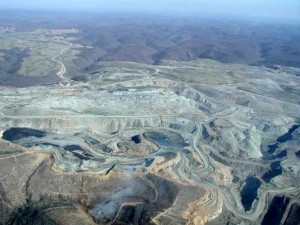Main Points:
- The effect of mountaintop mining on birth defects was even stronger than the effect of maternal smoking.
- Mountaintop mining in one county contributes to birth-defect prevalence rates in surrounding counties.
- The overall rate of birth defects was 13 percent higher in 1996-1999 and increased to 42 percent higher in 2000-2003.
Overview Summary:
- Study background:
- This study compared the number of birth defects in mountaintop coal mining areas and with non-mining areas in central Appalachia.
- The study observed birth defect numbers in 1996-1999 and 2000-2003.
- This study looked at all live birth outcomes regarding birth anomalies (defects) for the years 1996 through 2003.
- This study controlled for birth-defect risks that might be from others factors such as: mother’s age, race/ethnic origin, education, smoking and drinking during pregnancy, diabetes, and metro/nonmetro location, infant gender, and low prenatal care.
- Findings:
- There were significantly higher prevalence rates of birth defects in mountaintop mining areas vs. non-mining areas.
- Birth defect categories that are significantly higher in mountaintop mining areas vs. non-mining areas were circulatory/respiratory, central nervous system, musculoskeletal, gastrointestinal, urogenital, and ‘other’ defects.
- Overall, the prevalence rate for any defect was significant in both periods (1996-1999 and 2000-2003), but was higher in the more recent period (2000-2003).
- Conclusions:
- Elevated birth defect rates are partly a function of socioeconomic disadvantage, but remain elevated after controlling for those risks.
- The elevated birth defects suggest that environmental influences in mountaintop mining areas may be contributing factors to elevated birth defect rates.
- According to related research quoted in this article, infants has found that mothers residing in coal mining areas are more likely to have a low-birth-weight infant.
- This study extends that research which show that mountaintop mining areas are associated with elevated levels of birth defect prevalence rates.
- These prevalence rates have risen in more recent years, just as mountaintop mining increased from 77,000 to 272,000 acres between 1985 and 2005, a 250% increase.
- Implications:
- This study contributes to the growing evidence that mountaintop mining is done at substantial expense to the environment, to local economies, and to human health.
- The incidence of birth defects increased substantially during the more recent period, 2000-2003. The newest data is currently eight years old. This suggests the question, “How many more birth defects are occurring now, in 2011?”
- Policy Considerations:
- Unless mountaintop mining is ended now, many more Appalachian children will begin their lives with disabilities that will compromise their potential and productivity for the rest of their lives.
- The public will bear the costs associated with the specialized medical care needed by these children for the foreseeable future.
- Economic diversification is critical in mining communities to provide other forms of gainful employment.
- Funded and/or conducted by:
- Study conducted by Melissa M. Ahern,Washington State University and Michael Hendryx, Jamison Conley, Evan Fedorko, Alan Ducatman, and Keith Zullig, West Virginia University.
- The study was published in the peer-reviewed journal Environmental Research and was not funded by any environmental or advocacy group.
Citation:
- Ahern, Melissa M., et al. “The Association Between Mountaintop Mining And Birth Defects Among Live Births In Central Appalachia, 1996–2003.” Environmental Research(2011): 838-846. ScienceDirect. Web. 9 Feb. 2017.









